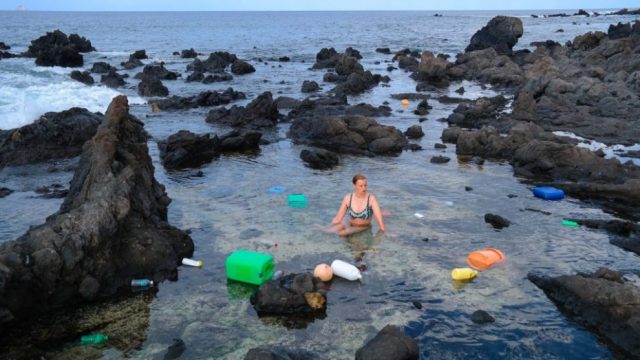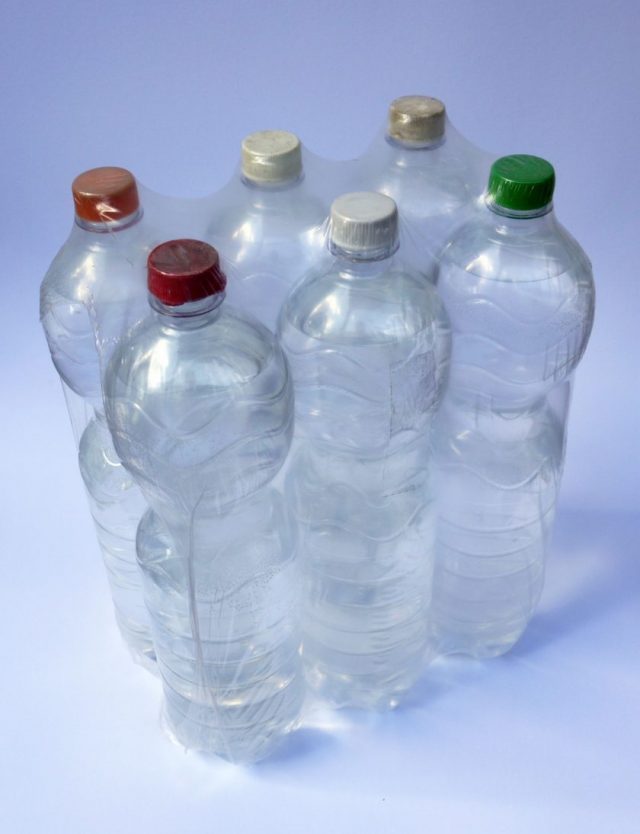Text: Swaantje Güntzel | Section: Articles by artists
My work focuses on mankind’s dysfunctional relationship to nature. Through a process of observing our everyday behaviour towards nature, dissociating it from its context and overstating its character I try to make visible just how absurd and illogical human activity often is.
Since 2008 I have been studying the various facets of anthropogenic pollution of the oceans and the phenomena of the Great Pacific Garbage Patch (the vast carpet of waste drifting through the Pacific), the plastisphere (recently discovered ecosystems hosted by plastic environments) or microplastics (tiny plastic particles in the micro- and nanometre range produced by the cosmetics industry or arising from the breakdown of larger plastic debris). Since 2014 I have broadened the scope of my work to incorporate the issue of the acoustic pollution of the oceans and its repercussions for aquatic fauna. A large number of my works have been inspired by my direct communication with scientists – biologists (especially marine biologists), physicists and wild animal researchers – who have provided me with data and materials and answered my further questions. My central concern is by artistic means to visualise the anthropogenic pollution of the ocean and the pervasive presence of plastics in our daily lives.

In May 2016, as part of an intervention lasting several hours I cleaned a 1-m² patch of beach free of microplastics on the Playa de Montaña Bermeja on the Atlantic island of Lanzarote. Altogether 1,370 particles were collected from the surface. The demarcated section of one square metre conforms to the units specified by scientists to measure the incidence of microplastics on beaches. A large wooden frame measuring 1 m x 1 m is placed on the sand and the sand within it sieved. The plastic particles are extracted and weighed in order to ascertain the ratio of sand/plastics.

Portrait with a “beauty mask” made of plastic micro-particles collected in relation to the intervention Microplastics in May 2016 on Lanzarote. A large proportion of micro- and nanoparticles found in the ocean derives from cosmetics products and cannot be filtered out in wastewater treatment plants.

Plaice (pleuronectes platessa) coated in glitter particles that were extracted from commercially available cosmetic products.

Series of snow globes incorporating plastic objects swallowed by albatrosses in the Pacific. The globes were hand-made in Austria at the Original Wiener Schneekugelmanufaktur, founded in Vienna by the inventor of snow globes.

Visualisation of patterns of movement made by 10 watertight mini GPS tracking devices that in 2014 were flushed down the toilet of a flat in Novoye Devyatkino by ecological activists from St. Petersburg. The trackers directly entered the waterways outside the building without first passing through a defecation facility. From Novoye the five devices reached Neva Bay where their batteries finally gave up. The experiment showed that waste flushed down a toilet will flow directly into the Baltic Sea.

On 10 January 1992 the container ship Ever Laurel, en route from Hong Kong to Tacoma, USA, lost part of its cargo in a heavy storm. One of the damaged containers opened and emptied 29,000 rubber toy animals (ducks, beavers, turtles and frogs) into the sea. Oceanographer Curtis Ebbesmeyer began tracing their passage along the ocean currents, since when he has been recording where the toys have been washed ashore. Some of the animals landed up along the coasts of the Pacific Ocean, such as on Hawaii. Others drifted over 27,000 kilometres and became lodged in the Arctic ice before, some 15 years later, they were washed up on the shores of Great Britain and Ireland in 2007.

Patterns of movement made by a large piece of debris in the Pacific that was fitted with a tracking device on 2 April 2008. Marking ocean debris with GPS trackers is part of the High Sea Ghost Net Project that was initiated in order to trace conglomerations of ocean debris and ghost nets (nets lost by fishing vessels or torn off in storms that drift uncontrolled in the ocean) with the purpose of removing them from the water. The GPS transmitted its position until 22 March 2013, when the signal fell silent.

Plastic waste washed ashore was collected on various stretches of beach near Órzola on Lanzarote and transferred to a natural pool. I bathed in the midst of the objects.

Nine cigarette lighters that were removed from the stomachs of Laysan albatrosses (phoebastria immutabilis) found dead on Kure and Midway Atoll (Hawaii). Each lighter was printed with a still legible advertising image that had been shot by a professional photographer in the style of a product catalogue. Parts of the printed images could be translated and designated. The lighters came from Taiwan, China and South Korea. The red cigarette lighter could be traced back to a shop in Pingdong City (Taiwan) and has in the meantime been returned to the corresponding address.
The bottle tops of a six-pack of water bottles from a German discounter were replaced by tops that had been swallowed by seabirds in the Pacific or washed ashore on the beaches of Kure Atoll (Hawaii).

Further information at: www.swaantje-guentzel.de
How to cite this article
w/k-Redaktion (2018): Marine Debris. w/k–Between Science & Art Journal. https://doi.org/10.55597/e3006





Be First to Comment